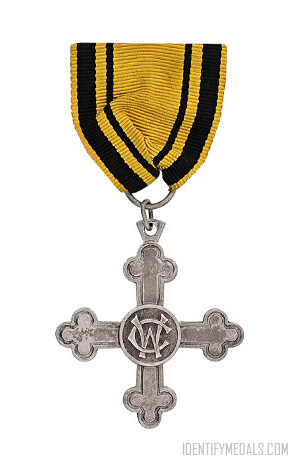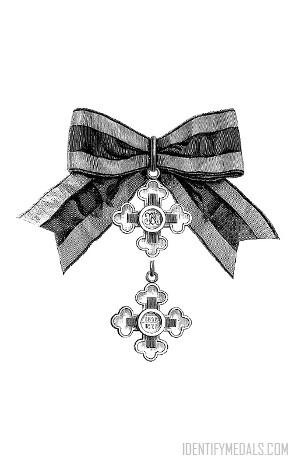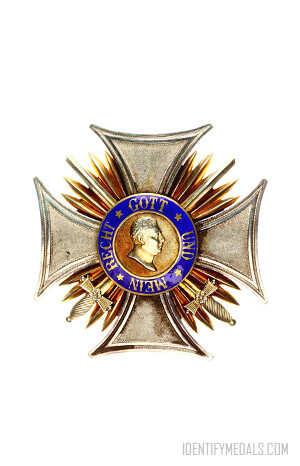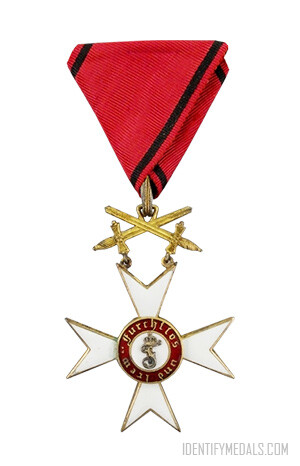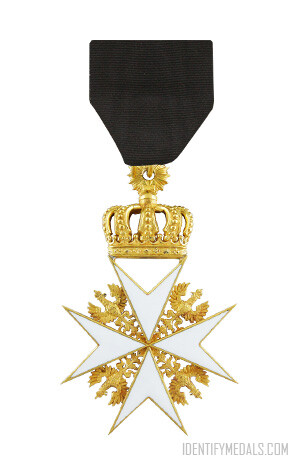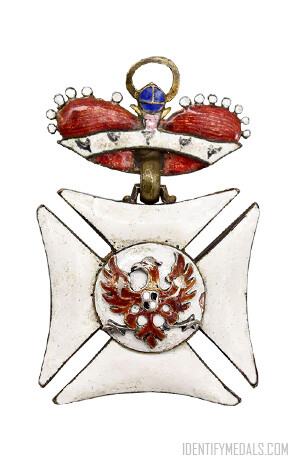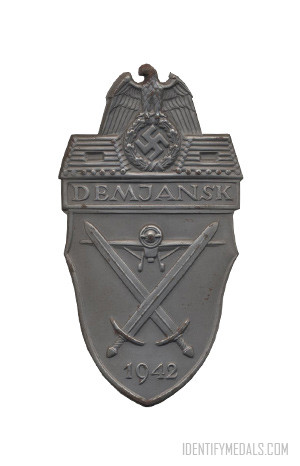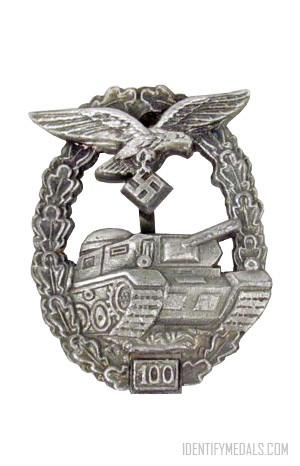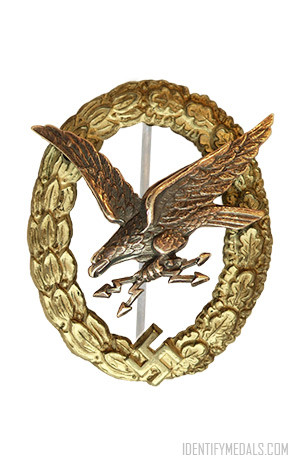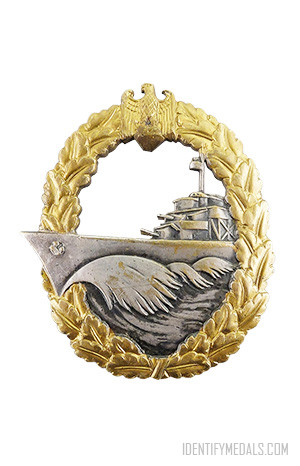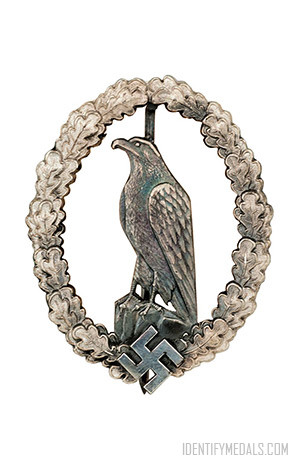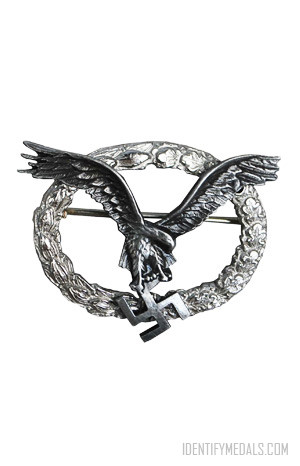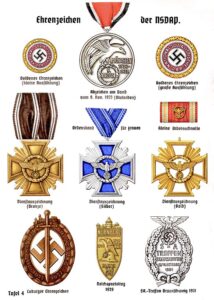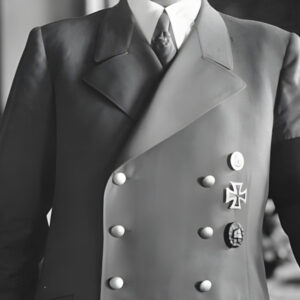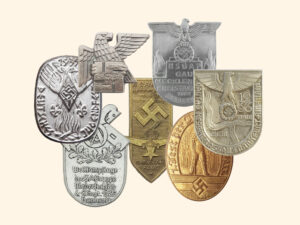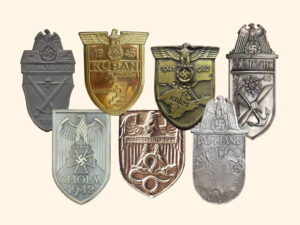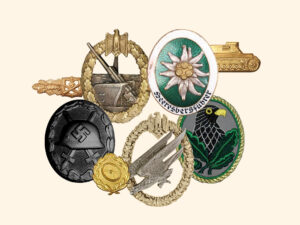Medals from Germany from World War I
German Military Medals & Awards from 1914 to 1918
Germany played a central and pivotal role during World War I. As a member of the Central Powers, alongside Austria-Hungary, the Ottoman Empire, and Bulgaria, Germany was involved in several key aspects of the conflict. For one, the war began with the assassination of Archduke Franz Ferdinand 🔗 of Austria-Hungary, but Germany’s support for Austria-Hungary and its subsequent declaration of war on Russia and France escalated the situation into a full-scale war.
German war medals (WW1) are one of the most popular medal collections for the country. So, on this page, you will find the complete list of decorations from the time period, alongside images and explanations.
Popular World War I Medals, Orders & Decorations
These medals and decorations were an important part of military culture in Germany during World War I, recognizing the valor, leadership, and service of those who participated in the conflict. Here are five WW1 German medals that served as symbols of honor and bravery:
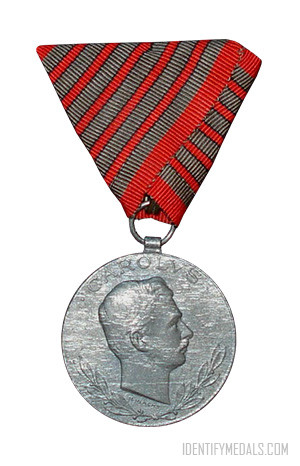
The Wound Medal (Austria-Hungary)
The Wound Medal (Austria-Hungary) a decoration of the Empire of Austria-Hungary established on August 12, 1917 by Emperor Karl I.
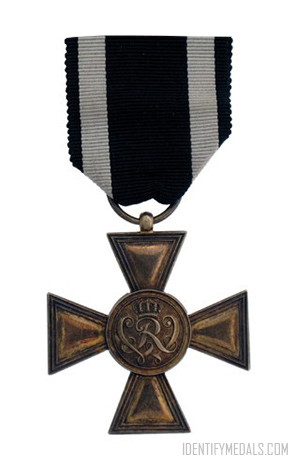
The Military Merit Cross (Prussia)
The Military Merit Cross was the highest bravery award of the Kingdom of Prussia for non-commissioned officers and enlisted soldiers.
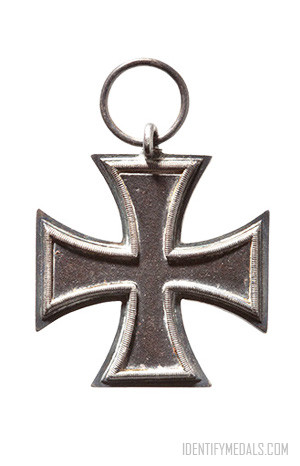
The Iron Cross (EK 1813)
The Iron Cross (Eisernes Kreuz) is a military decoration of the Kingdom of Prussia and later the German Empire and Nazi Germany.
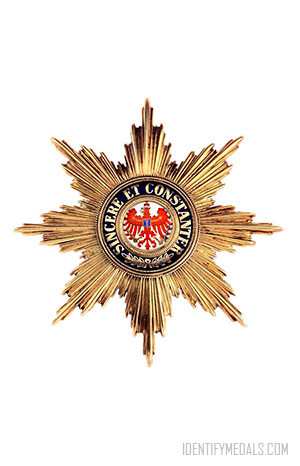
The Order of the Red Eagle
The Order of the Red Eagle (Roter Adlerorden) was an order of chivalry of the Kingdom of Prussia awarded to military personnel and civilians.
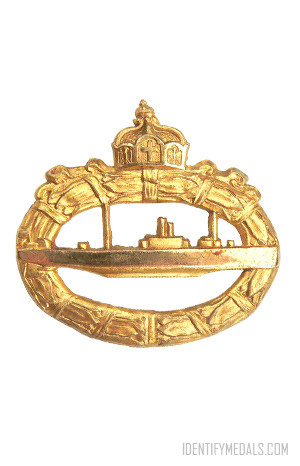
The U-boat War Badge (WW1)
The U-boat War Badge was a German war badge that was awarded to U-boat (submarine) crew members during World War I and World War II.
All WW1 German Medals
Germany’s role in World War I was characterized by its aggressive military strategies, technological innovations, and the significant impact it had on the course and outcome of the war.
As we mentioned above, the war started when Germany declared war on Russia and France following its support for Austria-Hungary. The country soon implemented the Schlieffen Plan 🔗, which aimed for a quick victory over France by advancing through Belgium, and then turning east to fight Russia. This invasion of Belgium brought the United Kingdom into the war. Germany fought major battles on both the Western and Eastern fronts, including the Battle of the Marne 🔗, the Battle of Verdun 🔗 and the Battle of Tannenberg 🔗.
Germany’s military situation deteriorated in 1918 with the successful Allied offensives and the collapse of its allies. Facing inevitable defeat and internal unrest, Germany signed an armistice on November 11, 1918, ending the fighting.
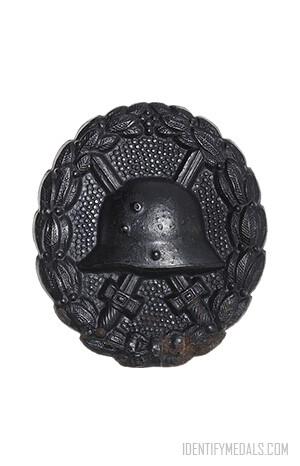
The Wound Badge (1918)
The Wound Badge (Verwundetenabzeichen) is a military decoration awarded to wounded or frostbitten soldiers during World War I.
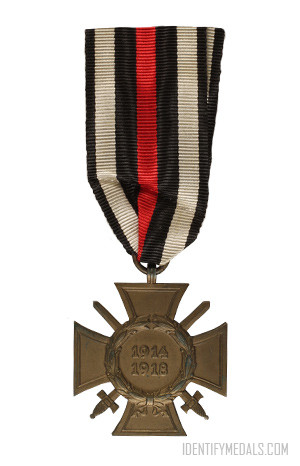
The Honor Cross of the World War 1914/1918 (Hindenburg Cross)
The Honour Cross of the World War 1914/1918 or Hindenburg Cross was established by Field Marshal Paul von Hindenburg after WW1.
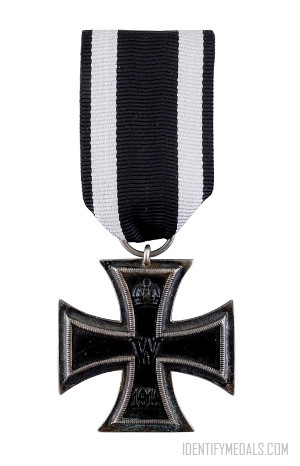
The Iron Cross (EK 1914)
The Iron Cross (Eisernes Kreuz or EK) is a military decoration established by King Friedrich Wilhelm III of Prussia in March 1813.

The U-boat War Badge (WW1)
The U-boat War Badge was a German war badge that was awarded to U-boat (submarine) crew members during World War I and World War II.
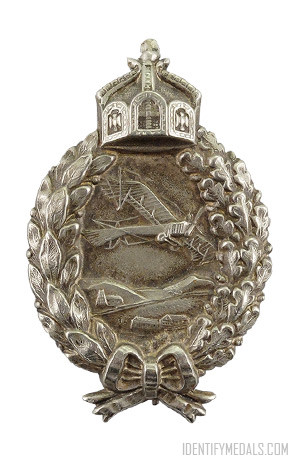
The Pilot’s Badge (Prussia)
The Pilot’s Badge is a badge from the Kingdom of Prussia instituted in 1913 by the King of Prussia and Emperor Wilhelm II.
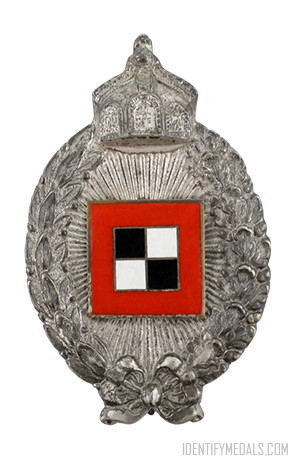
The Observer’s Badge (Prussia)
The Observer’s Badge is a badge from the Kingdom of Prussia awarded to qualified Imperial German Observers during WWI.
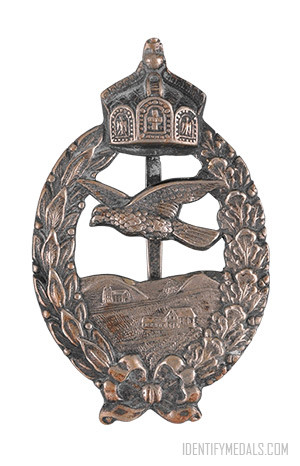
The Commemorative Flyer’s Badge (Prussia)
The Commemorative Flyer’s Badge is a badge from the Kingdom of Prussia awarded to retired German Army Air Service flight crew during WWI.
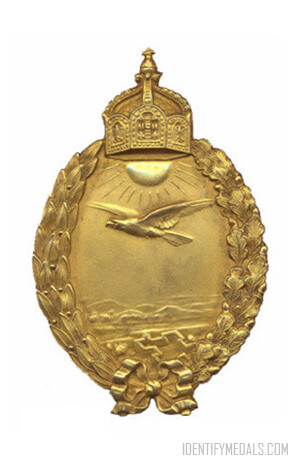
The Naval Sea Service Pilot’s Badge (Prussia)
The Naval Sea Service Pilot’s Badge is a badge from the Kingdom of Prussia awarded to qualified NCO pilots during WWI.
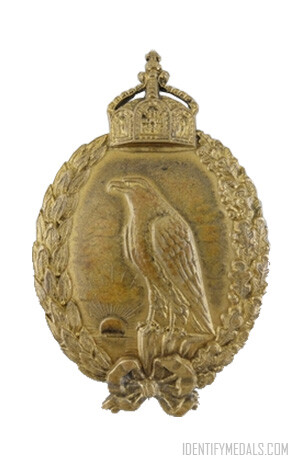
The Naval Observer’s Badge (Prussia)
The Naval Observer’s Badge is a badge from the Kingdom of Prussia introduced in 1915 by the King and Emperor of the German Empire Wilhelm II.
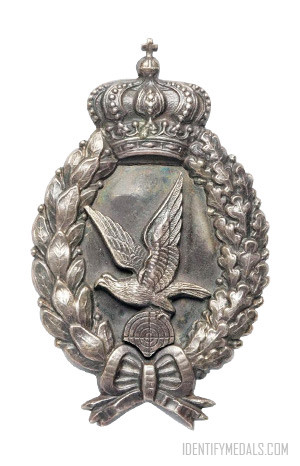
The Bavarian Air Gunner’s Badge
The Bavarian Air Gunner’s Badge is a badge from the Kingdom of Bavaria was introduced in 27 January 1918 by King Ludwig III.
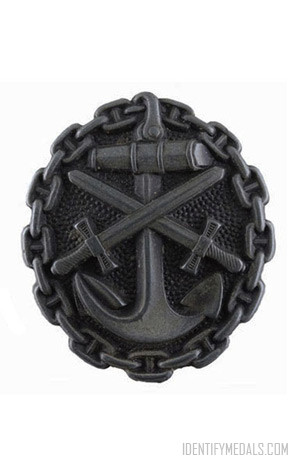
The Naval Wound Badge
The Naval Wound Badge is a badge from Imperial Germany established on 24 June 1918 by Emperor Wilhelm II for three or four wounds.
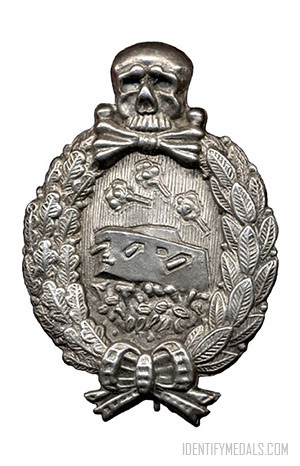
The Tank Battle Badge
The Tank Battle Badge (or Kampfwagenab-zeichen in German) is a badge established on 13 July 1921 by Dr. Otto Geller in Germany.
Keep scrolling for Imperial medals ↓
Imperial Germany Medals
In the period leading up to World War I, the German Empire had a rich tradition of awarding medals and decorations to recognize military and civil achievements. The system of honors included a variety of orders, each with multiple classes, designed to honor bravery, service, and merit.
German Medals From WW2 and the Third Reich
German medals from World War II were a significant aspect of Nazi Germany’s military honors system, designed to recognize and reward the bravery, service, and achievements of soldiers and civilians. These decorations varied in purpose and prestige, ranging from combat awards to long-service medals, and were often characterized by their distinctive designs incorporating Nazi symbols.
Featured Articles about Germany
Delve into articles that offer in-depth insights into various aspects of Germany. From historical events and influential figures to cultural phenomena and significant milestones, these articles hope to provide a comprehensive exploration of the diverse and fascinating aspects of German history, society, and culture.

